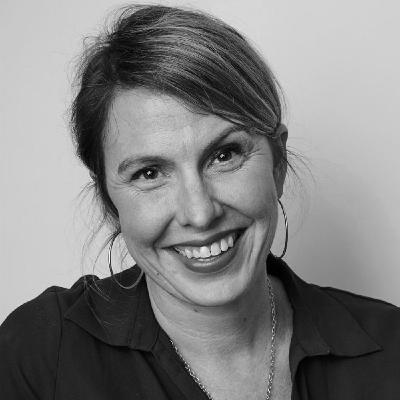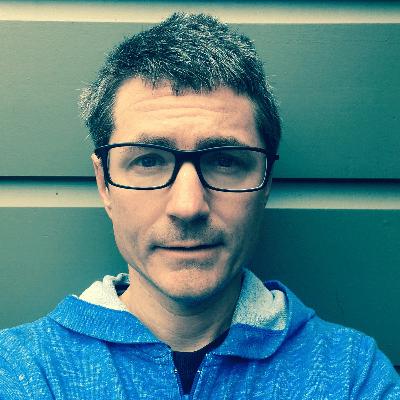50: Balancing Design and Business as a Utopian Pragmatist (ft. Leslie Witt)
Description
Transcript
Jesse: I’m Jesse James Garrett,
Peter: and I’m Peter Merholz.
Jesse: And we’re finding our way,
Peter: Navigating the opportunities
Jesse: and challenges
Peter: of design and design leadership,
Jesse: Welcome to the Next Phase. Joining us to talk about what’s next for digital product design is Leslie Witt, chief product and design officer for mental health care platform Headspace. Along the way, she’ll share with us her journey from designer to design leader to P&L business leader, she’ll also talk about building the credibility for a broader mandate for design as well as for yourself as a leader, and what to do when your intellectual tendencies get the better of you.
Peter: Hi, Leslie. Thank you so much for joining us.
Leslie: Thank you so much for inviting me.
Peter: So we always start these conversations in pretty much the same way, which is who are you, what do you do?
Leslie: I mean, that’s like an existential question, yes? Maybe I’ll start with the concrete answer. My name is Leslie Witt. I am the chief product and design officer at Headspace, which is the world’s largest, most accessible, and, I would say, increasingly most comprehensive mental health care platform out there.
And I also am a mom to twin 13-year-olds.
Peter: Excellent. Jesse and I are on a exploration. There’s been a lot of conversation in the community around some of the challenges of design leadership.
We’ve engaged this topic on the podcast a few episodes ago, on this thing we call the phase shift, and what we’re interested in is trying to figure out, or maybe do some sense-making around what’s next, right? Where are things headed?
And so we noticed that your job had changed from a VP of design to a VP of design and product, and we thought, oh, well maybe that’s, at least, a way forward. So, love to hear that story of what that shift has been like, from a design leader to a design and product leader.
“Utopian Pragmatist”
Leslie: Look, titles matter–and they don’t. And so I say that just… I’m going to, I’m going to go a little side path first, and then I promise to get back to your core question.
I started my life with a very clear title and role. I trained as an architect. I got three degrees in it. My entire self identity was as an architect, and I discovered 10 years in that I really disliked being an architect. Oh.
And I decided to take a plunge into the world of what I would say, the unnamed. Now, many would call what I plunged into… I became a designer. I joined the company IDEO and one of the things that I most loved in that and kind of connecting to your, you know, I am now a this, was that we got to pick our own titles.
And, you know, in their ecosystem, I was at the time an environments designer, that was the non-formal way of saying architect. But I didn’t put environments designer on my business card. Instead, I picked a title that I would say through all my career permutations is probably what I most see myself as.
And I picked “utopian pragmsatist.” And I think many designers are utopian pragmatists, which is that we’re in this game because we believe we can change the world for the better, and that the better is possible, and that we’re then ruthlessly pragmatic about navigating the vicissitudes of now, the technical capabilities and possibilities, the compliance constraints, the commercial constraints to actually make something come to life.
And that’s the kind of designer I’ve always been. That kind of designer has woven into many categories and incarnations and titles.
And as I transitioned out of a consulting world that is very flexible about what you call yourself and how you show up and who you are and what you can be and in many ways has a model that benefits from that flexibility, into a corporate world that really likes to see people aligned against a skills matrix, loves to see things kind of crossed off and ticked off and told who, you know, owns decision making criteria, what I found was that my style of design was sometimes in direct conflict with the way in which the organization operated.
And so I spent six, seven years as VP of design at Intuit. Thankfully at a company who saw design as a strategic function on par with product on par with engineering. It wasn’t a subdiscipline. And one where design was chartered with core service innovation, something that many other companies is kind of the provenance of product.
What I came to feel was that I had a designer’s approach to problem solving, but in a world that largely ascribed that level of authority and decision making and kind of rights to drive change to a title called product.
And so, as I shifted over into another discipline, another organization, a different sector and industry I kind of, you know, had a brief, like, mourning and grief moment of kind of stopping my fight against the fact that these were the rites and rituals and promises of the design discipline, but instead to take a designer’s hat and approach and ethics into the world defined as product.
So, well, a little bit of a long narrative, but I would say, like, for me, this was coming to grips with the fact that the way I approach design, is largely mapped to the role of product in many tech organizations.
Peter: Follow on that, when we had our podcast that we called The Phase Shift, we actually talked about ego death. That designers need to be willing to let go of that identity as a designer and possibly embrace, and be willing to embrace new identities where they can still be whoever they are, but they might be known in a different way. And it sounds like that’s what what what has happened for you.
I’m wondering though…
Leslie: Can, can I, can I like slight, slight parsing on language? ‘Cause I actually think, like, the identity of the designer is important. I, I definitely feel like it’s, it’s my, it’s my soul and it’s a huge part of my arsenal and worldview, but the title doesn’t necessarily map.
And I think that there’s a difference between say an ethos and an approach, and a titled role. And that the designerly approach, you know, the power of divergent thinking, the ability to take behavioral insight and transform it into new propositions to actually have an aesthetic value that takes things beyond the utilitarian, like, a lot of these kinds of core ethos are things that don’t always map to the title designer.
You can still hold those to be true as you navigate a range of different disciplines.
Product + Design vs just Design
Peter: Totally. I’m just wondering if, if what you are doing is any different with the title product and design than it was with the title design, or are you kind of showing up the same way and it’s just a different label?
Leslie: I, I would say a bit of both, to be fair. I think that as wearing the design hat and title, you are commissioned to be agent provocateur, right? And I would say, especially for me, like, coming from an innovation background, like you are expected to present with some level of future visioning, novelty, operating outside of constraints.
Yes, understanding commercial value, but not necessarily being foundationally constrained by it. You add a lot of value in that frame by kind of helping the group expand what could be very kind of here-and-now analytical thinking into a divergent possibilities-oriented space.
Now, I have to navigate more schizophrenia that impulse to do so, but with the power to actually be the person making the decisions on what we do or don’t prioritize, and it’s hard to do both well, and to own when you’re kind of stepping in which role, and that’s something that I’ve had to get much better at is when I’m not the person that’s commissioned to act in a particular way.
And so instead say, I’m going to have my head of design actually lead a visioning exercise, and then I’m going to be the person helping to deconstruct that and look at capability buildings, and data that we want to collect in order to prove out path X, Y, or Z. That the power position, you know, if I’m if I’m being honest of the product leader, it wields more authority, but then with that comes a level of constraint that doesn’t naturally sit with the role of design.
Jesse: I think that for a lot of design leaders, it’s just very difficult for them to square the role that they see over on the product side with their identity as designers. Now this seems like it’s been an easier bridge for you to cross in part because of what your design practice has always been. But I find myself wondering what you did have to reconcile yourself to as you were making this transition.
What was maybe hard to accept having to leave behind as you are squaring your identity as a designer with this new role, and what was maybe hard to accept that you had to take on.
Leslie: Yeah, no, that’s a, that’s a great push. A few things, you know, I would say like, I would have been out there in the early 1900s as like a suffragette. Like, I, I am the person that wears the banner that is the champion. And I’ve























